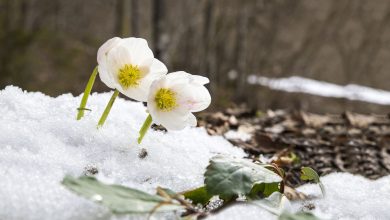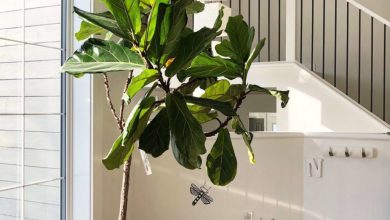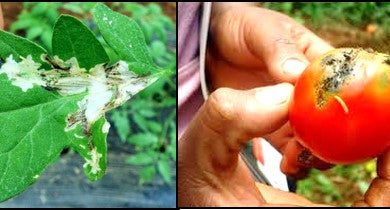How to Plant a Mimosa Tree: [Complete Guide + Step by Step]
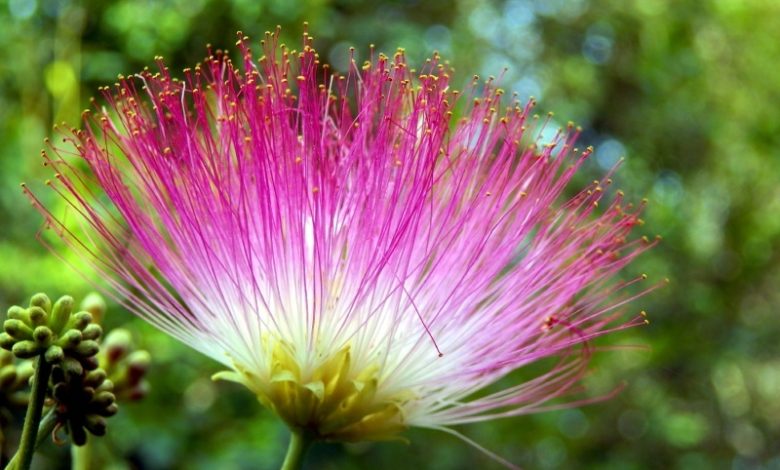
When it comes to outdoors, beauty abounds in the large number of species available for planting, counting among themthe mimosa (Acacia dealbata).
The mimosa is a tree that can reach approximately 12 meters in height.
Its breadth andyellow blossomit gives a very relevant touch to any environment, being able to offer color and shade to your garden.
On the other hand, it should be noted that the yellow of its flowers is not the only thing that stands out, as they also have a delicious smell.
If we have already aroused your curiosity, we invite you to fill yourself with the best information with this complete guide.
And that’s already!
Important Points when Planting Mimosa
- When? The best time is in summer. It is the time when the cuttings are most easily extracted.
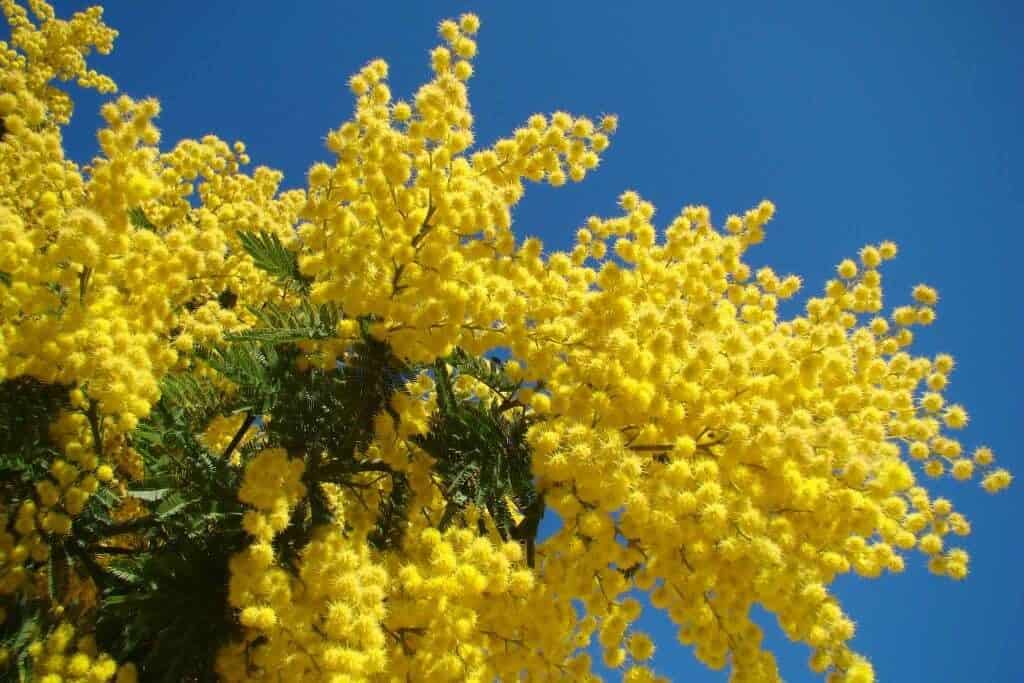
- Where? It adapts to hot and cold climates, but not big frosts. Ideal for Mediterranean or Atlantic climates (not mountainous).
- How do we prepare the land? It likes sandy loam soils. Does not tolerate clay soils. We prepare the land with a good supply of organic matter andhomemade organic matter such as compost.
- How do we water? Ideal drip irrigation to keep the soil constantly moist, but without flooding. Especially in summer when the rains are scarce.
- Growing time? From seed the mimosa will take about a year to be noticed. By cutting in about three months.
- Favorable associations? It gets along well with most plants, however it looks very pretty with other ornamental plants.
- Plagues and diseases? Special care must be taken with the fungus Fusarium Oxysporum.
When to plant a mimosa?
 The best time to do your sowing is summer,since during this time it is easier to extract cuttings.
The best time to do your sowing is summer,since during this time it is easier to extract cuttings.
It is best not to transplant them, but if the sprout is in a pot, the process will have to be carried out taking care that the root and root ball are included.
In this way, the living conditions inside the pot will not be greatly altered.
Where to make it plant a mimosa?
The main thing to keep in mind when selecting the placeis the average temperaturewhich is handled in each season.
The mimosa is an evergreen plant, easily adapted to hot and cold climates, but not to severe frosts.
That is why its sowing is preferable to do it in areas that maintain an Atlantic environment or, on the other hand, the Mediterranean.
However, it can also be given some protection with structures such as walls.
Doing this in areas like the south and west will also help keep them from getting hit by strong winds that can cause damage to their branches.
But you also have to consider thatdirect sunlight does not cause major problems,so at this point the care needs decrease.
How do we prepare the land for growing a mimosa?
 When sowing mimosa you have to be very attentive to the characteristics of the soil, because without being highly demanding, it does give some tastes.
When sowing mimosa you have to be very attentive to the characteristics of the soil, because without being highly demanding, it does give some tastes.
The first thing is to verify that you havea loamy or sandy texture,In either case, you’ll be fine.
However, we must take into account the fact thatdoes not toleratenone of the clay soils.
Their preparation should be done a couple of months before starting the planting process, as they need a well-nourished soil.To get the nutrients of choice, compost is your favorite candidate.
For this reason, it will be necessary to pay before planting and carry out the same procedure around the trunk ofquarterly form.
Since compost is a product that can be made at home (as with earthworm humus), the costs generated by the plant are much reduced.
How do we water mimosas?
Mimosa roots tend to spread quite widely throughout the ground.
Therefore, it must be ensured thatthe water reaches the deepest areasbecause it is a fact that the dry season does not do very well.
The best will bemake a frequent watering and more or less abundant in times of sun,conscientiously reducing the amount in times of rain.
How to plant a mimosa step by step?
When planning the sowing, the information corresponding to the development of the plant must be taken into consideration.
In this sense, we will have to consider the step by step that we present below:
- Carry out the preparation of the land, as has been arranged in the previous segments.
- You have to dig a hole that is wide and deep. This is to allow the mimosa root to spread well throughout the area.
- After planting, proceed to cover the hole and follow the care described.
Now, you have to know that the planting of the mimosa can be done in two ways.
sow by seed
 The first is with the seeds, which will have to undergo an adaptation process so that roots can sprout.
The first is with the seeds, which will have to undergo an adaptation process so that roots can sprout.
This will be done in a place that has a good level of humidity and is kept in the shade at all times.
This process will last for 1 year, after which the mimosa can be planted wherever desired.
Sow by cuttings
The other step is through cuttings.
These will be taken from selected stems that have not gone through the flowering process, but that appear healthy.
The idea will be to plant them with a specific substrate made of sand and peat.
As with the seeds, it will be necessary to be attentive to the shade and the humidity, only in this caseThe process will last 3 months.
What favorable associations does it have?
Being a garden plant, the mimosa can have favorable associations with many types of plants.
Especially those plants for ornamental use that do not have abundant roots and that survive in the shade.
However, most people who have a specimen prefer to leave it with grass in its lower part, without associations.
What pests and diseases affect the mimosa?
When sowing and cultivating any type of plants, we must pay close attention to the issue of pests and harmful effects.
In this regard, there is a fungus known as Fusarium Oxysporum that is capable of withering the entire structure in a very short time.
The main reason for this is that it does not attack the leaves of the plant from the beginning, but spreads from the roots, achieving a greater impact.
This internal process is difficult to notice until the changes become more visible, since its movement is through the sap.
If you have noticed important changes in your tree, such as pale leaves, slow growth or cracking of the bark, you may be in the presence of this fungus.
Having a tree of these characteristics at home is one of the best decisions that can be made.
Even when it does not produce fruits, its flowering is abundant and, in general, it needs little care after sowing has been achieved.
How long does the mimosa live?
The mimosa has a very short lifespan, barely reaching 30 years.
How long does mimosa take to grow?
It can take up to 10 years to grow and develop a wide canopy due to the slow pace.
How long does it take to produce fruit?
Around 4 years after planting, the mimosa already begins its production work.
Can it be grown in a pot?
Yes, it can be worked in a pot, controlling the size it will have and, therefore, the level of flowering.
How many times does mimosa produce fruit?
It blooms only once a year, although as it does in a staggered way it seems more times.
That means that the production of fruit is also one.
Should mimosa be pollinated to obtain fruit?
Yes, it must be pollinated and this is done naturally thanks to the intervention of bees.
How cold can mimosa tolerate?
It has a relative resistance to cold, but it is better to keep it in spaces with mild winters that do not drop below 6° C.
It does not support frost.
How many mimosas can be planted per hectare?
As it develops a wide canopy, between 100 and 200 trees per hectare can be planted to maintain a plantation framework that favors it.
What kind of fertilizer does mimosa need?
Fertilization will be recommended for strengthening and greater flower production.
It is better to be nitrogen based in early spring and then encourage the use of phosphorus and potassium.
How much heat and/or drought can mimosa tolerate?
It is able to hold up well in climates that even reach 30°C in summer.
It is moderately resistant to drought, so it must be ensured that it is not prolonged.
[pt_view id=”f54fcb1evj”]

![Photo of Moisture mealybugs (Porcellio scaber): [Characteristics, Detection, Effects and Treatment]](https://www.complete-gardening.com/wp-content/uploads/2021/06/Que-son-las-cochinillas-de-la-humedad-390x220.jpg)
